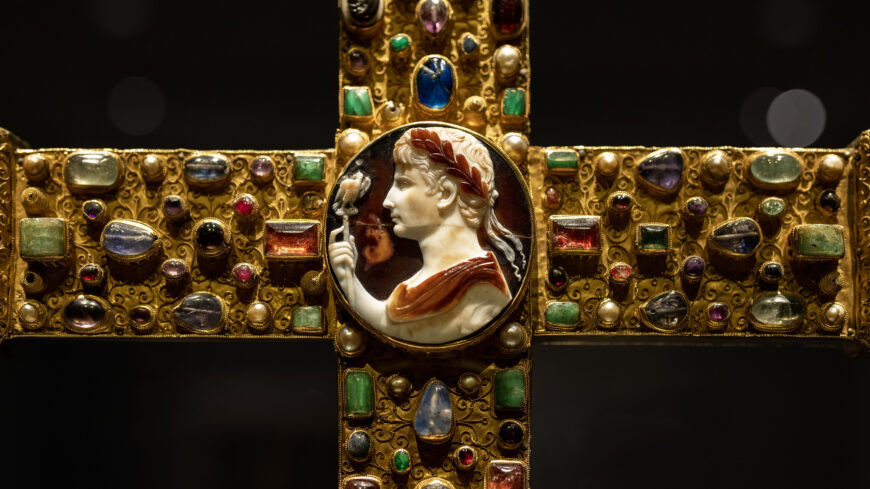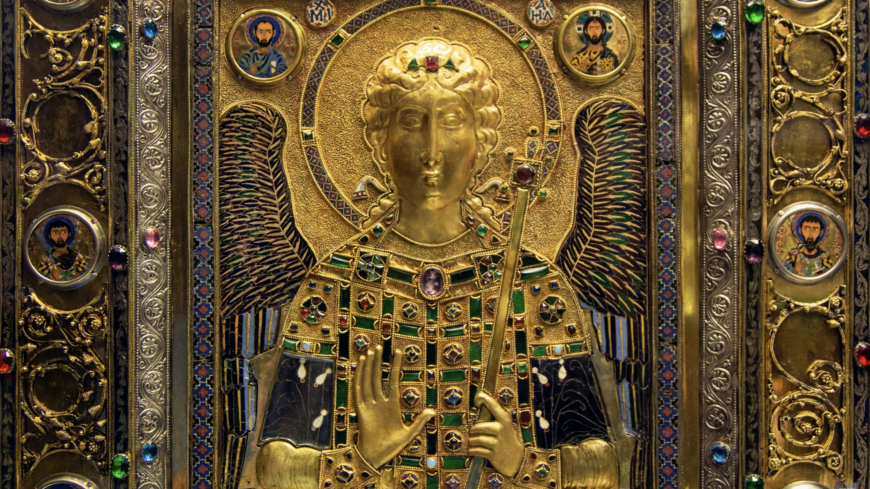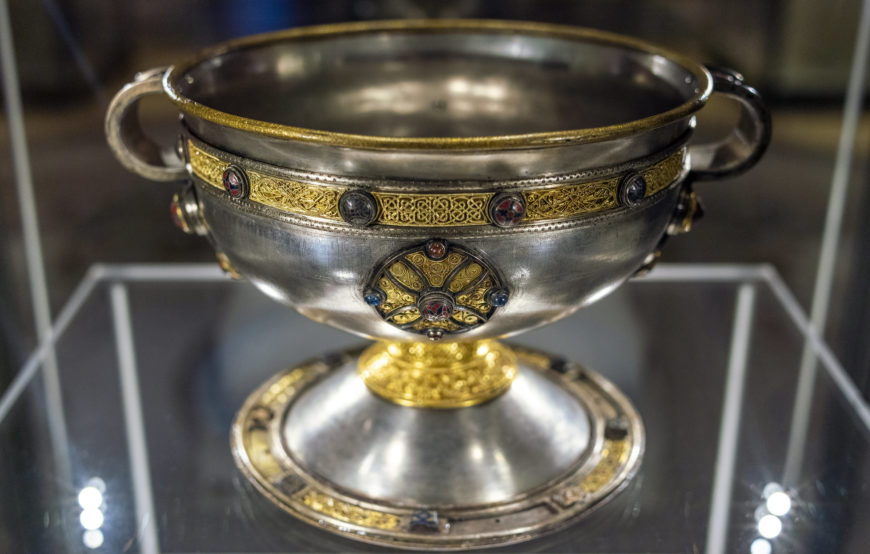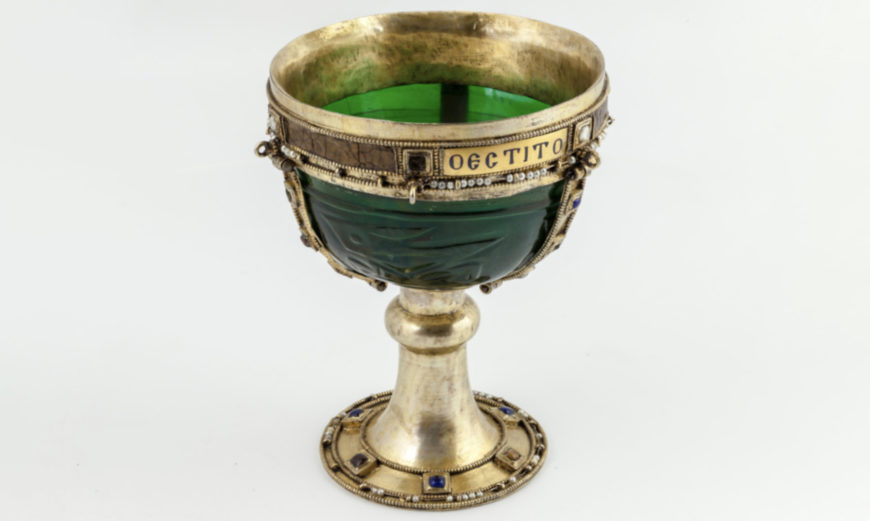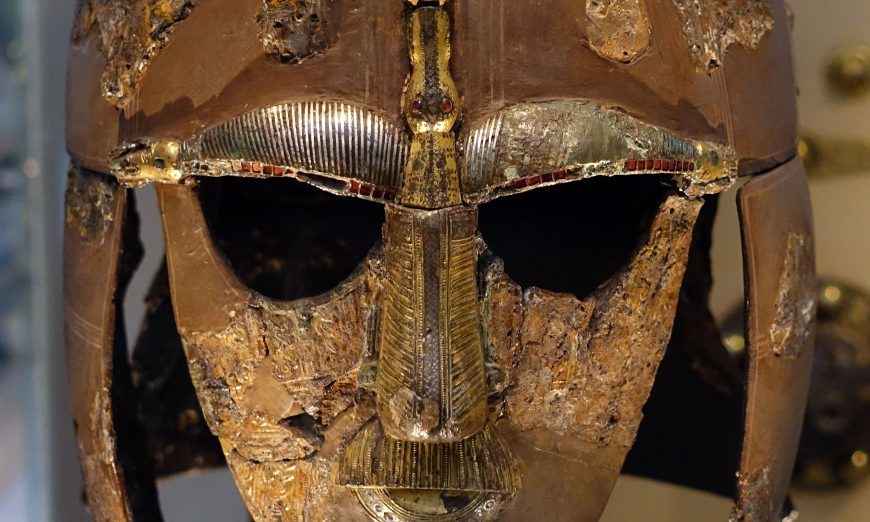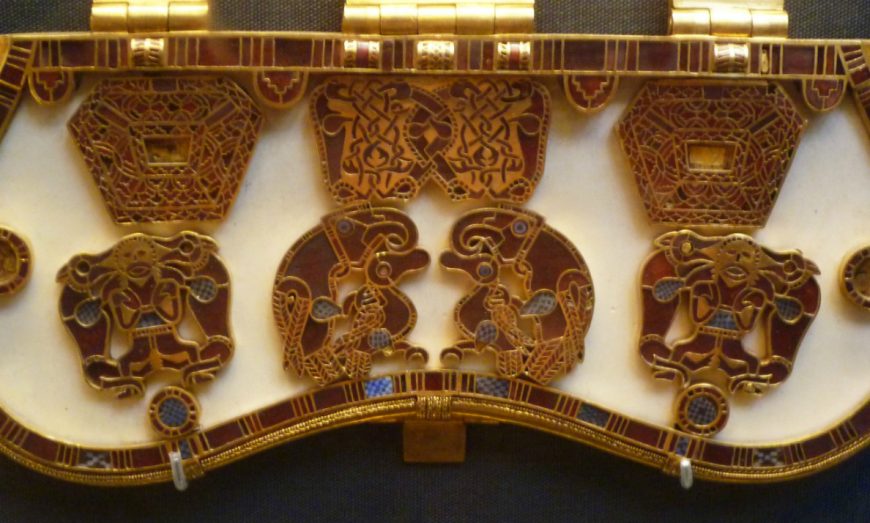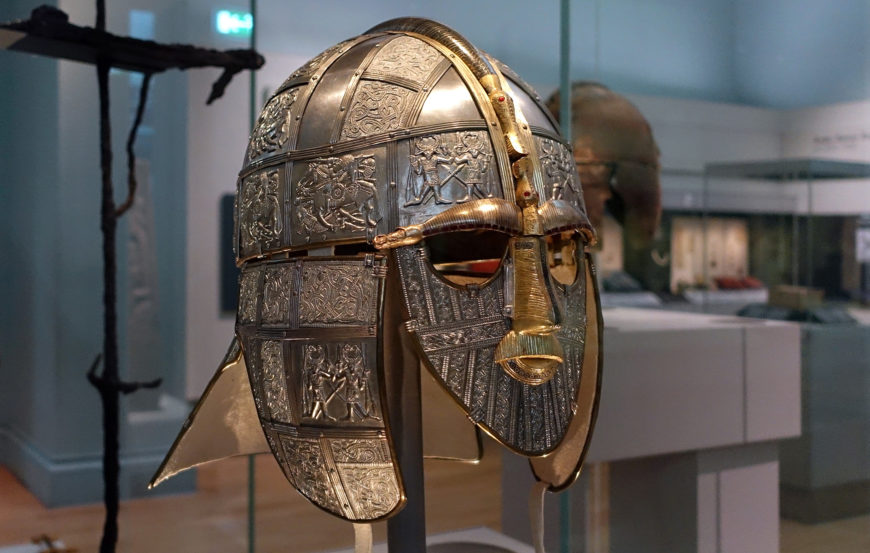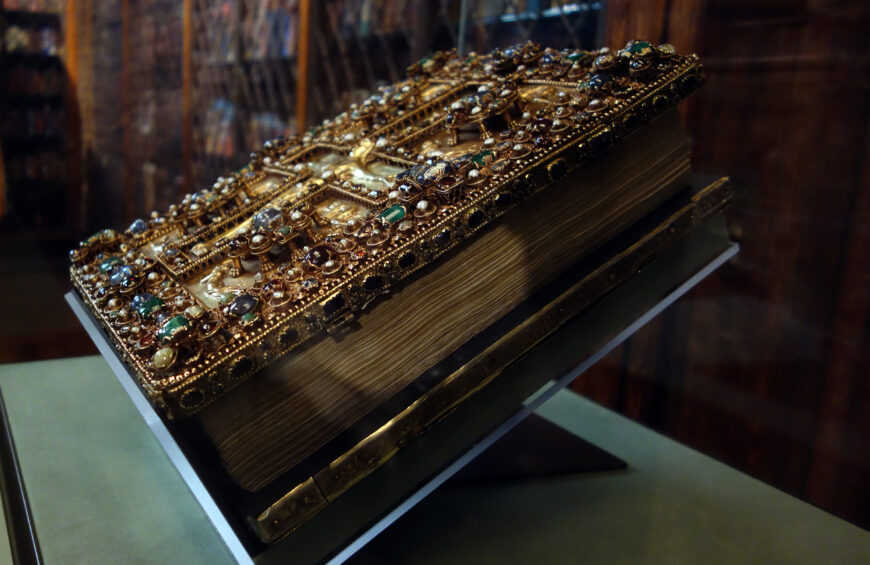The Cross of Cong (commissioned by Tairdelbach Ua Conchobair king of Connacht and high king of Ireland), 1123, oak core within cast bronze, rock crystal, gold filigree, gilding, silver sheeting, niello and silver inlay, glass, and enamel, 76 x 48 x 3.5 cm (National Museum of Ireland); speakers: Dr. Lauren Kilroy-Ewbank and Dr. Steven Zucker
The Cross of Cong
[0:00] [music]
Dr. Steven Zucker: [0:05] We’re in the Archaeological Museum in Dublin, looking at this magnificent cross. The closer you look, the more you see.
Dr. Lauren Kilroy-Ewbank: [0:13] This is the famous Cross of Cong, made in the early 12th century, likely in 1123. It is covered in decoration, and it is made of so many different materials.
Dr. Zucker: [0:27] Let’s talk about its purpose. This would have been attached to a pole, and it would have been processed. It would have been used in ritual. It would have compelled worshipers to come from very far away, because it contained something extraordinarily important.
Dr. Kilroy-Ewbank: [0:42] At one point, behind the rock crystal that’s right at the center of the crossing of the arms, was a fragment of what was believed to be the True Cross, or the cross upon which Jesus Christ was crucified.
Dr. Zucker: [0:56] Think about what that would have meant in medieval Ireland, so far from the Holy Land.
Dr. Kilroy-Ewbank: [1:02] The True Cross is one of the most important relics from early Christianity. The Roman Emperor Constantine had associations with the true cross; specifically, his mother, Helena, is thought to have found the True Cross, initiating its importance as a relic.
[1:17] Later, Charlemagne, the ruler of the Holy Roman Empire, had a fragment of the True Cross, and [it] has important imperial associations.
Dr. Zucker: [1:25] It is a way of establishing Ireland as a kind of second Rome.
Dr. Kilroy-Ewbank: [1:29] Before we talk about how this establishes Ireland as a type of new Rome, let’s look closely at its fantastic design. The cross itself is made of an oak wood core encased in metalwork.
Dr. Zucker: [1:41] It is embellished with this beautiful lobed goldwork, and then behind that, this darker metal, and then niello and enamel. It is this tour de force of craftsmanship.
Dr. Kilroy-Ewbank: [1:54] We’re seeing elaborate gold filigree panels, some with circular or spiral motifs, others that have complex interlace.
Dr. Zucker: [2:02] I think my favorite part on this cross is the open-mouthed animal that seems to bite down on the base of the cross itself, and can be seen on both the front and the back. It’s such a great representative of the playful quality that is found even in these sacred objects.
Dr. Kilroy-Ewbank: [2:20] This is an object that requires close looking, because the interlace is so complicated that it’s easy to overlook the beasts and the snakes that join together or that are woven together in this entangled decoration.
Dr. Zucker: [2:34] A kind of decoration that Ireland had been perfecting for centuries and that we can see in early manuscripts like the Book of Kells and so much early metalwork.
Dr. Kilroy-Ewbank: [2:44] One of the details that I always find fascinating about objects like this is the rock crystal. We see it used in a number of objects, not just here in Ireland but across the continent as well. That is because rock crystal had associations with Christ. Jesus is the “lux nova,” the new light that’s going to guide people to salvation.
[3:04] That is being picked up here by its use to both magnify the fragment of the True Cross and with the idea of rock crystal reflecting light. We’re seeing also the use of the Urnes style, this Viking or Scandinavian style that often has a beast or some type of animal within these thin ribbon-like snakes intertwining it. That was common by this time because you had the Viking presence in Ireland.
Dr. Zucker: [3:30] In fact, an important battle had just taken place and the Vikings had recently been defeated.
Dr. Kilroy-Ewbank: [3:34] When you have the Vikings temporarily removed before they come back, you have a power vacuum. During that battle, the High King of Ireland, Brian Boru, is killed, even though they defeat the Vikings.
[3:46] In that power vacuum, you have many different kings of Ireland who are attempting to claim the title of High King for themselves. With this particular cross, the king who is associated with it was one of those individuals.
Dr. Zucker: [4:00] This is testified by an inscription along the side of the cross.
Dr. Kilroy-Ewbank: [4:04] On both sides of the cross we have inscriptions in Irish and in Latin. In Irish, it identifies the royal patron, Turloch O’Connor, the king of Connaught who was attempting to establish himself as the High King of Ireland. We also have the mention of several important churchmen and artists who were involved in creating it.
Dr. Zucker: [4:25] It’s interesting that the Irish language is used to focus on those that were immediately involved in the creation of this cross, whereas the Latin is reserved for the religious. The Latin reads, “By this cross is covered the cross on which the creator of the world suffered.” It is as if the Latin is speaking to the spiritual and the Irish is speaking to the earthly.
Dr. Kilroy-Ewbank: [4:45] It was celebrating the glory of God but it’s simultaneously glorifying those involved in its creation and speaks to the political posturing of Turloch O’Connor. The pope had sent a fragment of the True Cross to Ireland in 1123 as a way to encourage people to fight on the church’s behalf in the Crusades in the Holy Land.
[5:09] While that was largely unsuccessful, Turloch O’Connor does acquire that fragment of the True Cross. This helps to establish his claim to the title as the High King of Ireland. To be in possession of such an important relic would not have gone unnoticed by both his rivals and even his followers.
Dr. Zucker: [5:26] Considering this object’s age, it is a real miracle that it has survived and that we can look at it here in Dublin today.
[5:32] [music]
This object on the National Museum of Ireland website.
Griffin Murray, The Cross of Cong: A Masterpiece of Medieval Irish Art (Dublin: Irish Academic Press, 2014).
Loading Flickr images...




